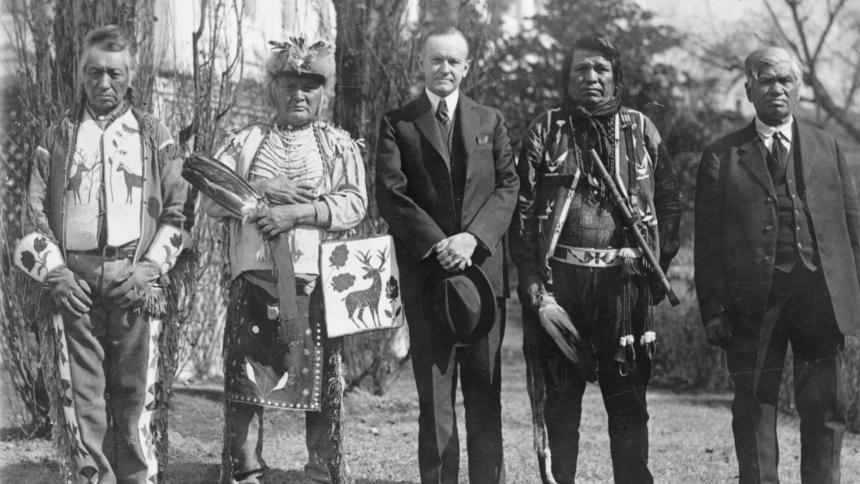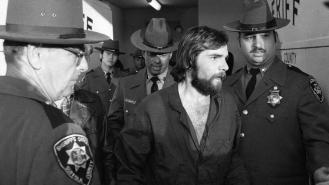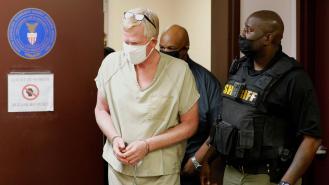
The real crimes behind 'Killers of the Flower Moon'
When a new film by the legendary director Martin Scorsese is announced, people take notice. The 80-year-old is renowned as a cinematic heavyweight, not least of all because of the incredible real-life crime stories he’s turned into some of modern culture’s best-loved movie treasures.
Scorsese’s latest is a sweeping three-and-a-half-hour crime epic called Killers of the Flower Moon. Based on David Grann’s 2017 non-fiction novel of the same name, it tells a genuinely shocking story that was only too real.
Background
In the early 1920s, while the crazy days of The Wild West were behind the United States, frontier spirit and itchy trigger fingers still pervaded. The Gold Rush may have been in the country’s rearview mirror, but there was a new treasure occupying every entrepreneurial American’s mind: black gold.
Osage County, the largest county in Oklahoma, had lots of oil. It didn’t take long for the cash-hungry vultures to circle. The trouble was the oil was under Osage Nation ground, meaning it belonged to the Midwestern Native American tribe of the Great Plains known as the Osage.
The Osage Nation had long been aware of the oil and the potential riches it held for them. Aside from the black gold, the land was otherwise of little interest to the men that had colonised America. So, very cleverly, they negotiated large swathes of the seemingly worthless land, that those in Washington DC were only too happy to sign across in negotiations.
When knowledge of the oil broke to those outside of the Osage Nation, deals were struck and work was started to get to it. While some money was made by oilmen, the profits mostly went to the people that owned the land. Something that non-Osage Oklahomans quickly began to resent.
The Reign of Terror
White settlers in the state, perhaps unaware of the Osage’s pre-existing knowledge of the oil, argued that it was unfair for their Native American neighbours to get all the riches of the land, while they lived on - essentially - worthless land nearby. Legally, there wasn’t much they could do about it. Illegally, however, there was plenty.
The United States Congress passed a law in 1921 requiring courts to appoint guardians for each Osage member, someone who would manage their royalties and financial affairs until they demonstrated ‘competency’. This law was due to concerns that the Osage would not be able to manage their new wealth or the pressure from outsiders who wanted a piece of it.
These guardians were chosen by the courts from among the local white solicitors or businesspeople. Many of whom were only too keen to exploit their new influence and get rich.
To gain control of oil rights, some prominent Oklahoma folk conspired to kill specific members of the Osage community. Murders were reported from as far back as 1918 and as late as 1931. The majority of the killing was carried out between 1921 and 1926, a time that was known as the Reign of Terror. Due to the poor quality of policing back then, the exact number of victims is unknown. Although it’s believed that more than 60 Osage Nation members were targeted and slain to gain control of their oil.
William King Hale
At the head of the conspiracy was a man called William Hale. A rich rancher who moved to Osage County from Texas to set up Hale Ranch, this corrupt cattleman refused to let morals, ethics, laws or the lives of Native American rivals stand between him and vast oil riches.
Hale was extremely influential in the political sphere and one of the wealthiest men in the area. He was something of a gangster too, thinking nothing of bribing officials, extorting money from people, using intimidation to get deals done and bullying competitors. Oftentimes he’d follow up on threats, along with the assistance of his two nephews, Ernest and Bryan, and a number of trusted heavies and contract killers.
The Pinkertons
Back in the 1920s, the Midwest of the United States wasn’t exactly lawless, but law enforcement was underfunded, weak and corrupt, which allowed the Reign of Terror to continue. Eventually, the cash-rich Osage Nation grew tired of waiting for the police to assist and hired the Pinkertons.
The Pinkertons were a detective agency and security firm that had been going since The Civil War. Well organised and extremely effective, they were the largest private law enforcement organisation on the planet. Their investigation bore fruit and, soon, state governors and the newly-formed Federal Bureau of Investigation (FBI) took note and began investigating the increasingly brazen and motive-heavy murders.
The Feds crack the case
The FBI’s investigation, dogged and thorough compared to the local law’s attempts, proved successful. Soon, many of the corrupt guardians of the Osage wealth were uncovered and the full picture emerged of just how implicated the wider community was.
Agent Tom White was pivotal in solving the case. As the head of the Houston FBI, White was assigned to lead the investigation into the Osage murders. With his new ability to enact federal powers and overrule local police, the headstrong and savvy White was able to wade through the murky waters of the case and, eventually, drain the swamp.
In doing so, Agent White and his G-Men found proof that more than $8 million had been stolen from the Osage Nation by various people, most of it under the supervision and guidance of William Hale. That’s more than £150 million in today’s money.
Resolution
The case, of course, went to court. It soon turned into a media circus when Hale’s nephew, Ernest, confessed all, pleading his own guilt and ratting out his uncle in quite spectacular fashion.
To try and derail the feds’ case against him, William Hale called in favours to spread rumours that Agent White’s team was extracting false confessions under duress, using torture methods to make people talk. It’s extremely unlikely that there was any truth to these rumours. The ploy was unsuccessful, and William Hale was found guilty of first-degree murder after an initial mistrial. He was sentenced to life in prison. For his part in the murders, Ernest Burkhart was also sentenced to life imprisonment.








